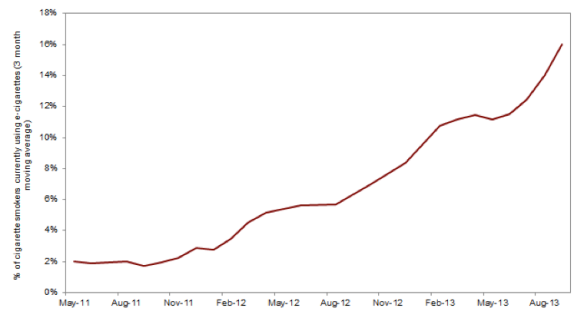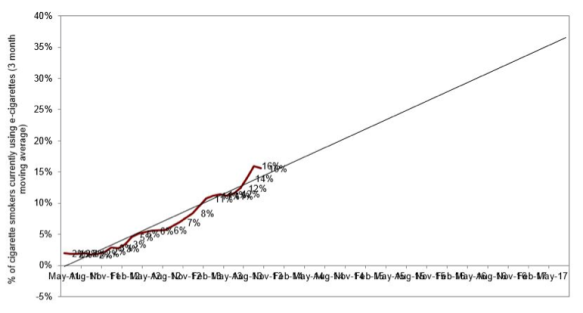On the 17th of September the Health and Social Care Committee took evidence from amongst others, Dr Stephen Monaghan of BMA Wales and Dr Jane Fenton-May of the Royal College of General Practitioners.
In their evidence Dr Monaghan and Dr Fenton-May made a number of statements:
- Nicotine is addictive
- Nicotine is dangerous
- Children share e-cigarettes and therefore contact hepatitis
- Vaping undermines the smoking ban
- E-cigarettes are targeted at children
- Passive vaping is dangerous
- E-cigarettes lead to the renormalisation of smoking and are a gateway to smoking
- The e-cigarette industry is owned by tobacco
- People using them do not realise that they contain nicotine
Like you, we believe that policy should be based on evidence and as a campaign representing the interests of vapers, their friends, and their families, this is particularly important to us. It was therefore interesting that when asked by two members of the committee to provide evidence, they were unable to provide a single piece of evidence to support a single one of the above statements.
Does vaping undermine the smoking ban?
There is no evidence what-so-ever to indicate that vaping undermines the smoking ban or makes it harder to enforce. The Chartered Institute of Environmental Health, the body tasked with enforcing the ban, stated that there is a 99.7 per cent compliance rate with the smoking ban, and they have found no evidence to support the idea that vaping in public is undermining this.[1]
Are e-cigarettes targeted at children?
No. Evidence produced by a variety of organisations including ASH and the American Cancer Society (ACS) clearly shows that flavours do not entice non-smokers to use e-cigarettes. Researchers from the ACS[2] found that flavours did not increase the attractiveness of e-cigarettes to teenagers. Rather, ‘Even after controlling for other statistically significant correlates, the odds of a smoker being willing to try an e-cigarette were 10 times those of a non-smoker.’
Flavours are though important for adult smokers switching to vaping. In research[3] carried out by Dr Konstantinos Farsalinos and others, vapers stated that the availability of flavours was “very important” in their effort to reduce or quit smoking. This research also found that the majority of vapers would find e-cigarettes “less enjoyable” or “boring” if flavours were restricted, while 48.5 per cent of vapers stated that it would increase their cravings for tobacco cigarettes and 39.7 per cent of vapers said that without flavours it would have been less likely for them to reduce or quit smoking.
Strict new advertising rules also make it impossible for the industry to target children through advertising and a ban on the sale of e-cigarettes to under 18s will soon be introduced in Wales.
Are e-cigarettes used regularly by children?
No. Looking specifically at Wales, Cancer Research UK concluded: ‘Looking specifically at two studies dedicated the use of e-cigarettes amongst young people in Wales only a minority of teenagers who try e-cigarettes go on to become regular users. And the majority of those who do use the devices regularly were already smokers.’[4] This is backed up by research undertaken by ASH.[5] We also know of no cases of hepatitis contacted from shared vaping.
Do e-cigarettes lead to a renormalisation of smoking and act as a gateway to smoking?
No. We are very lucky in the UK that a significant amount of work is done on the issues or gateway and renormalisation. This work in updated on a regular basis and is principally carried out by Professor Robert West and ASH. Both state that there is no evidence that e-cigarettes act as a gateway into smoking[6] and that there is no evidence that vaping risks re-normalising smoking.[7]
Is the e-cigarette industry really owned by big tobacco?
No. Figures produced by the Electronic Cigarette Industry Trade Association (ECITA) show that of the 407 brands/companies operating in this sector in the UK only six are owned by tobacco companies. The companies they own are those that manufacture and sell the cig-a-like e-cigarettes. These are the more ineffective products that are used by an increasing minority of vapers as research from the University of East London demonstrates.[8]
Is nicotine addictive and dangerous?
Most e-liquids will contain pharmaceutical grade nicotine. It will be MHRA approved and the same as that used in NRT products. This clean nicotine in and of itself is not a harmful substance. Professor Robert West said, “E-cigarettes are about as safe as you can get. We know about the health risks of nicotine. Nicotine is not what kills you when you smoke tobacco. E-cigarettes are probably about as safe as drinking coffee.”[9] Over the summer a number of bodies including ASH[10] and the Royal Society of Public Health[11] called for more to be done to ensure the public understand that nicotine is ‘not the deadly component in cigarettes.’
Nicotine is addictive when consumed via cigarette smoke. However, as Professor Linda Bauld and others have made clear, nicotine when consumed in a form other than tobacco is not a particularly addictive substance.[12] You can see this with vapers. Many heavy smokers when they first switch to vaping will start off using a high strength nicotine e-liquid, but over time they will reduce the strength they use and some will even go on to vape nicotine free e-liquid. Vapers often forget to vape; would they do this if they were addicted?
Is passive vaping dangerous?
No. A major scientific study undertaken by Dr Konstantinos Farsalinos and Professor Riccardo Polosa concluded that the “effects of e-cigarette use on by standers are minimal compared with conventional cigarettes.”[13] A review of the available literature conducted last year by researchers at the Drexel University School of Public Health in Philadelphia concluded that “exposures of bystanders pose no apparent concern.” Finally the US Food and Drug Administration conclude that all other substances measured for e-cigarettes were far below allowable levels for human inhalation. They state that levels are so low that it is more hazardous to an individual’s health to breathe the air in any major metropolitan city during rush hour.
Conclusion
Dr Monaghan’s and Dr Fenton-May’s statements were caveated with ifs and maybes. There should be no room for ifs and maybes in policy making. When asked they were unable to provide members of the committee with any evidence to support their statements. In this briefing we have countered their statements with facts and we have drawn those facts from ASH, Cancer Research UK, the MHRA, Professor Linda Bauld, Professor Robert West, Public Health England, ECITA, Dr Konstantinos Farsalinos, the ONS, Royal Society of Public Health, Chartered Institute of Environmental Health, University of East London, Professor Riccardo Polosa, the American Cancer Society and others.
Banning vaping in enclosed public places is not a minor change as supporters of the ban will have you believe. Vapers will go back to smoking and fewer smokers will switch to vaping.
We have pointed out time and time again that there is no evidence to justify this ban. We have provided AMs with numerous briefings and we have written countless times to the Minister and his officials. We feel like we are banging our heads against a brick wall and when we watch evidence sessions like the one on the 17th of September we simply want to cry. What do we have to do to get a fair hearing and for facts to triumph over unfounded, evidence free fears?
Yours sincerely
Save E-cigs
[1] Meeting of the All-Party Groups on Smoking and Health, Pharmacy, and Heart Disease 10 June 2014
[2] http://www.jahonline.org/article/S1054-139X(12)00409-0/fulltext
[3] http://www.mdpi.com/1660-4601/10/12/7272
[4] http://www.cancerresearchuk.org/about-us/cancer-news/news-report/2015-04-16-regular-e-cigarette-use-low-among-teens-analysis-suggests
[5] http://www.ash.org.uk/media-room/press-releases/:latest-data-finds-no-evidence-that-electronic-cigarettes-are-a-gateway-to-smoking-for-young-people
[6] http://metro.co.uk/2014/04/27/e-cigs-cleared-of-being-route-into-smoking-4710734/
[7] http://metro.co.uk/2014/04/27/e-cigs-cleared-of-being-route-into-smoking-4710734/
[8] http://www.uel.ac.uk/psychology/staff/lynnedawkins/
[9] The Guardian newspaper 05 June 2013
[10] http://www.ash.org.uk/:ash-supports-calls-for-more-to-be-done-on-public-understanding-of-nicotine
[11] http://www.theguardian.com/society/2015/aug/13/health-bosses-promote-e-cigarettes-harmful-tobacco-smoking-experts
[12] http://www.scottishparliament.tv/category.aspx?id=19&page=1&sort=date
[13] Safety evaluation and risk assessment of electronic cigarettes as tobacco cigarette substitutes: a systematic review:
Konstantinos E. Farsalinos and Riccardo Polosa
published online 13 February 2014 Therapeutic Advances in Drug Safety



